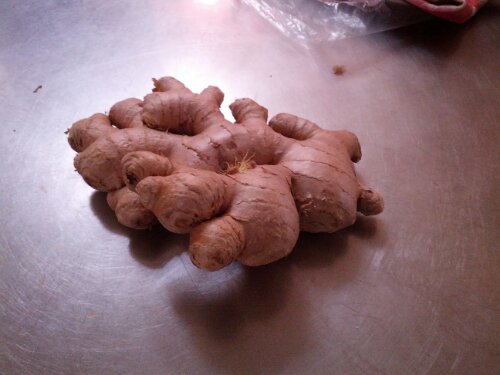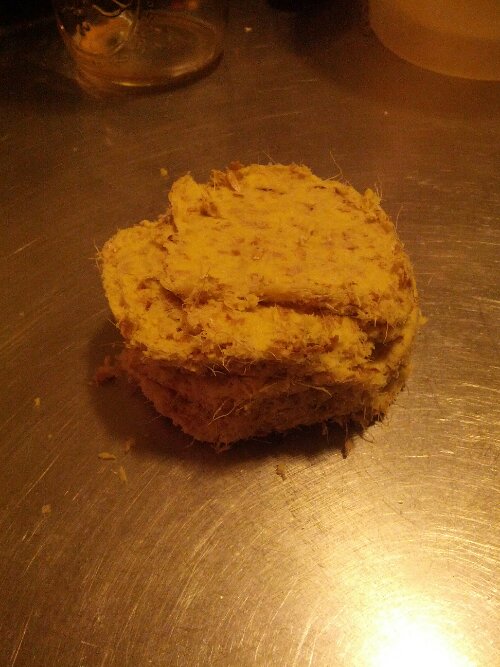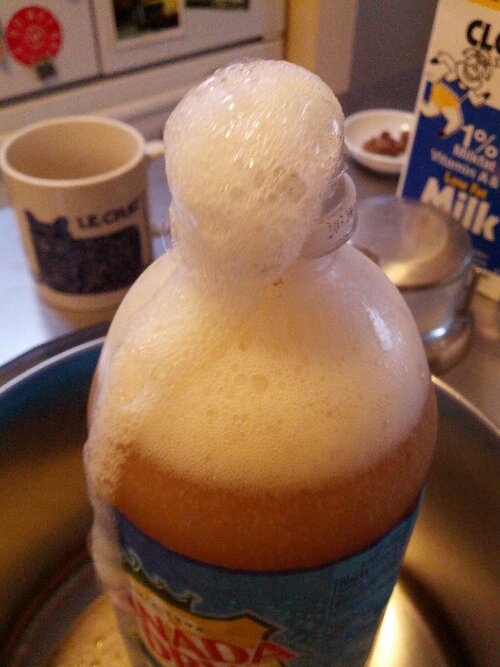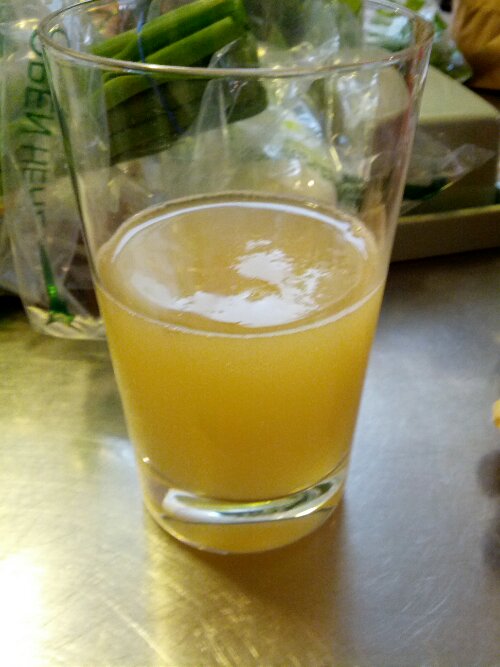Everyone liked the last batch of Ginger Beer so much, I felt like I had to make another.
I’m doubling the last batch of yeast carbonated ginger beer, and making a few changes to the method from the last.
Flannestad Ginger Beer.
INGREDIENTS:
10 oz well rinsed fresh Ginger Root, preferably organic, roughly sliced.
1 1/2 cup Washed Raw Sugar.
2 quart Water.
1 teaspoon active dry yeast.*
METHOD: Bloom yeast in lukewarm water with 1 teaspoon sugar. Bring 24 oz water and all sugar to simmer. Add ginger to blender bowl with remaining water and puree. (Blender works well for me in these amounts, but if you have a juicer that can juice ginger root, go for it.) Pour through cheesecloth to filter. Press as much liquid out of ginger solids as possible, I use a sturdy potato ricer. Add ginger juice and water to hot sugar solution and cool to lukewarm. Add yeast and bottle in clean sanitized containers, leaving some headroom. Seal tightly and place in a warm dark place for 5-8 hours, depending on temperature and how feisty your yeast is. Move to refrigeration when the bottles are firm to the touch. Yeast (tan) and Ginger starch (white) will fall out of solution. When serving, open carefully over bowl to catch potential over-foam.
The first change I made this time was just to rinse the ginger root well with warm water, instead of peeling. I need to do a side by side comparison with peeled and unpeeled to find out if peeling makes a difference in flavor. Really, the only thing which slightly concerns me about not peeling is the potential for bacterial contamination from the skins.
This time, the ginger root was quite a bit more mature than the last. The flavor of the juice and ginger beer is hotter and sweeter than the more floral young ginger I used last time.
Nicely formed ginger pucks, after squeezing. You could dry them and use for room fresheners.
I continue to use empty soda water and mineral water for the ginger beer. Easier and safer than glass, at this point. You can gauge the carbonation level easily by simply squeezing the bottle and checking the firmness. Some small risk they’ll pop the caps and make a mess, but little risk they will become ginger grenades. Once I get the ferment times down, I may switch to bottling in glass.
Interestingly enough, it seems like the canada dry soda water bottles form a much better seal than the crystal geyser mineral water bottles. With the same time allowed for fermentation, the ginger beer in the canada dry bottles over-flows copiously, while the ginger beer in the crystal geyser is carbonated but does not overflow. Perhaps there is some CO2 leakage with the crystal geyser bottles above a certain pressure threshold.
A lot of other ginger beer recipes use spices or citrus in them, I actually really like how this is just about how complex and multilayered a flavor pure ginger root has. The complexity you get is amazing, not to mention the length of the flavor. You start by enjoying the great smell of fresh ginger root in the carbonated bubbles with a touch of yeast, enjoy the sweet and floral flavor, are knocked back by the heat, and then enjoy the long evolving flavor as it fades.
I guess we have the temperance movement to thank for the prevalence of pressure carbonated ginger beers and other sodas, but maybe if more people give the real thing a try we can get some of this real flavor back. With yeast nutrients, real sugar, and natural ginger maybe these could gain as much traction as kombucha.
Commercial ginger beers and ales, pumped up with capsaicin for heat and with their flacid ginger flavor from extracts, are poor, poor substitutes, indeed, for real ginger beer.
*Yeast plus sugar and water equals Carbon Dioxide and alcohol. In general, stopping the active fermentation at this early a stage of fermentation, the alcohol levels should be fairly low.


















